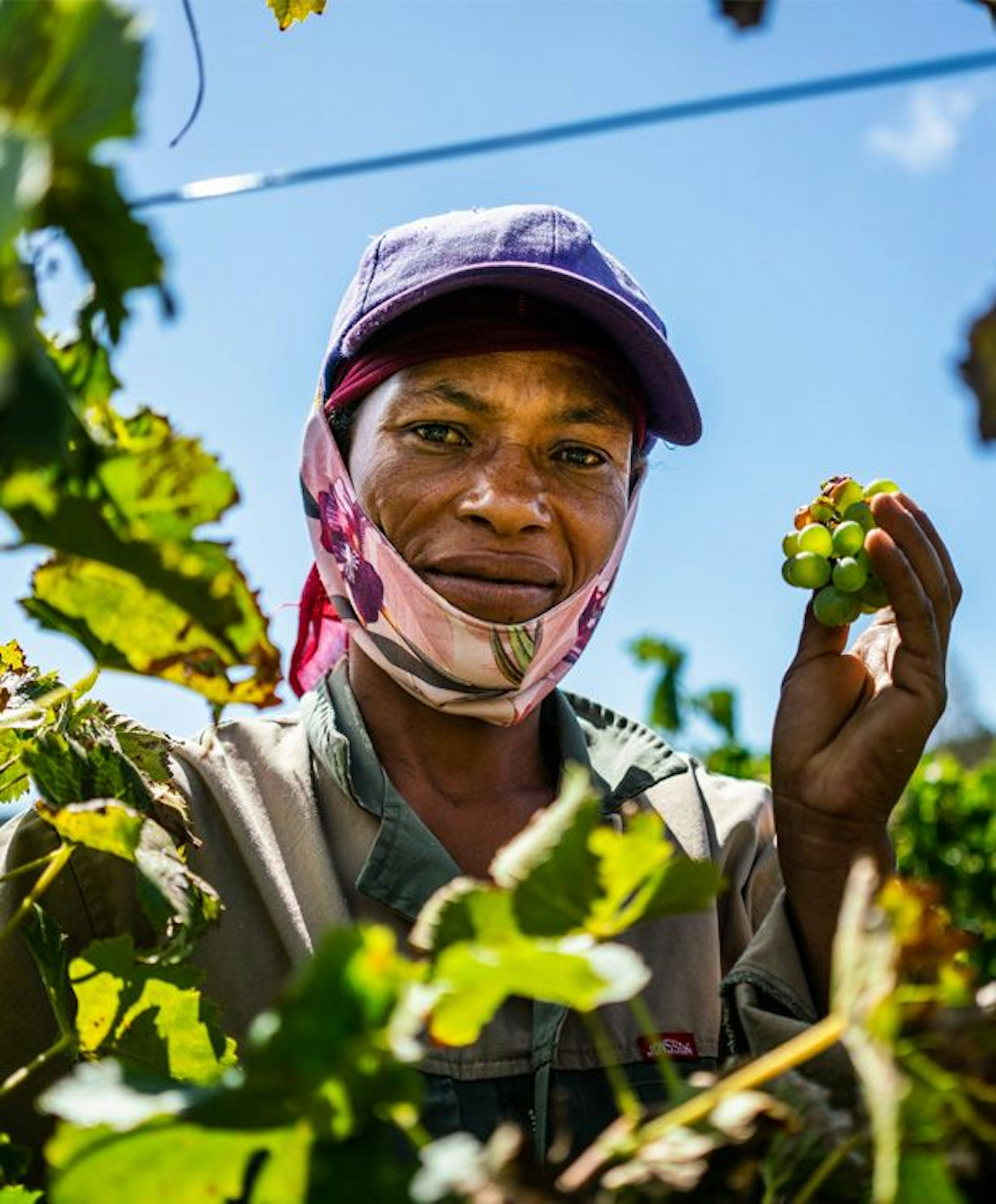Wine grapes

Overview
Europe dominates the wine scene in both production and consumption, but a growing share comes from the Southern Hemisphere. The largest Southern producer countries Argentina, Australia, South Africa and Chile each account for 4% of global wine production. In Argentina alone, the industry employs almost 400,000 people.
Wine has a buyer-driven supply chain, where retailers and brands hold strong bargaining power over prices and other standards. For example, the market for South African wine is dominated by supermarket chains in Italy, Germany and the Netherlands.
Wine grapes are grown on both small-scale farms and large plantations and Fairtrade works with both types of organizations. Fairtrade wine grape producers are in Chile, Argentina and South Africa.
The salient issues in the wine sector (in the order of saliency):
- Living wage
Piecework is common at vineyards and earnings are usually below living wages. Pieceworkers are not paid in the case of rain or sickness. Extensive use of labour brokers aggravates the risks.
- Living income
Many vineyards struggle to cover the cost of production. In South Africa, the wine industry association reports that 37% of wine producers are making a loss.
- Water & Biodiversity
Wine production is water intensive. On average, the production of a single glass of wine takes 110 litres of water.
- Climate change
The industry produces a notable level of climate emissions, due to the use of glass bottles and machinery, cross-continental transportation, and maintenance of specific temperature for wine storage.
- Freedom of association & Collective bargaining
The unionization rate is very low among wine grape workers. For example in South Africa, relations between vineyards and trade unions are strained.
- Working conditions
Excessive overtime is common. Most workers are hired for harvesting on seasonal basis, without written contracts or access to social security such as accident insurance.
- More information on risks in wine grapes

Root causes
Power relations: Retailers and brands hold tremendous sway over the wine industry. Some of them use price as the sole criterion in tendering, and bulk wine purchases are growing.
Bulk wines are exported in large flexi tanks and blended, bottled and branded by importers or retailers in the destination country. This makes it easy to switch suppliers and further raises the bargaining power of importers or retailers. The average export price of South African wine to German markets, for example, has declined by over 80% since 2000.
Climate change: Water shortages and extreme weather events are impacting wine producing regions around the world. By 2050, most land in today's major wine producing regions may be unsuitable for vineyards.
Structural inequality: Migrants and women, who are widely employed by vineyards, face structural inequality maintained by a wide array of social norms and discrimination.
Background data on wine grapes (*Global Volume / **Fairtrade Volume)
Largest producer countries*
- China (20%)
- Italy (10%)
- France (8%)
- USA (7%)
- Spain (7%)
- Others (48%)
Source: 2022, International Organisation of Vine and Wine, OIV
Dominant production model*
of wine grapes cultivated in Australia come from small and medium scale companies.
Source: Galbreath et al 2022.
Fairtrade certified producer organisations**
Data from 2023.
Fairtrade certifiable production**
metric tonnes in 2020, equalling 1,4 million hectolitres.
Farmers and workers in Fairtrade organisations**
Data from 2020.

Stay updated
Partnering for change
Companies can be part of the solution by identifying and addressing the most serious risks and root causes in collaboration with farmers, workers and other affected people. Sign up to receive updates as we add new information to this Map, or to hear how Fairtrade can support your corporate sustainability due diligence.
Map View